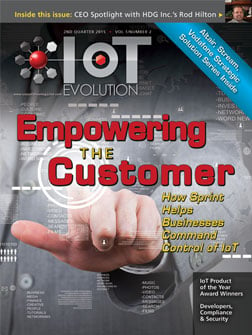With so many new types of smartphones, tablets, and now the “phablet” (a great marketing term that is being used to categorize over-sized phones that are typically five-inches or more in size), being released each month, consumers are left with a difficult decision in terms of keeping up with the latest technology: which device should they choose? This question is especially impactful for large enterprises that are looking to leverage these devices throughout their organization.
The difference between a smartphone and tablet is significant. Think about it: you use your phone with one hand and one thumb or finger for editing. Your phone is always with you and fits in your pocket and is used for quick checks of data like e-mail, bank balance or Facebook (News - Alert) status. A tablet is a device you use for extended periods, like when you are sitting in a conference taking notes, showing clients a slide deck or fact checking while watching TV.
“I watch how people use tablet and the device is very social,” says Matthew David, chief digital strategist at Compuware, a provider of enterprise mobile solutions. “Tablets are great for showing videos, photos and shared experiences. The technology is very similar to phones but the interaction is massively different.
The first issue that should be addressed is the devices shelf life, which is being driven not by the ability for the device to keep running but the termination contracts carriers are putting in place. According to David, a typical smartphone is on a two-year contract, but does this mean the phone stop working after two years? Of course not, but the technology leaps mobility is taking drives consumers to upgrade. Tablets are inheriting a similar 24 month cycle. Often the two-year tablet cycle is driven by negotiated leasing contracts with the carriers.
The cost of the devices are not an issue either, as most smartphones and tablets cost anywhere from $200-450, which is a fraction of the cost put into the price of a laptop computer. Right now, the cost for mobile devices is being moved into services to manage the rapidly increasing number of devices within a company.
“Take for instance a location with 300 employees. Assume each employee has a laptop and a phone, and also assume 50 percent have a tablet,” added David. “During a four year cycle (typical for laptops) each employee will use two phones and one tablet. That’s 900 devices, or a 3:1 ratio between devices and laptops. The cost is now in the device management software and cloud services to centralize content.”
With the bring your own device (BYOD) trend gaining momentum, enterprises are having to make tough decisions in terms of what mobile device to implement. However, at the end of the day, David says that the device is not relevant. Instead, what is more important is to standardize one platform.
“It becomes a challenge to manage multiple operating systems (we do not support multiple operating systems on desktops for most companies). “Put time in deciding your mobile OS and let that choose the devices you support.”
Lastly, security must be an enterprises’ number one concern when working with mobile devices. This is currently one of the most sensitive issues when it comes to leveraging a device in the workplace, as it puts both the end-user and an entire company at risk.
“Compuware (News  - Alert) assumes all mobile devices are insecure,” David concluded. “This is a similar approach to Web design: all websites have the potential to be accessed from insecure locations. The same design practices are implemented between a mobile design.”
- Alert) assumes all mobile devices are insecure,” David concluded. “This is a similar approach to Web design: all websites have the potential to be accessed from insecure locations. The same design practices are implemented between a mobile design.”
For more information about on how to utilize security solutions to protect the enterprise, please visit Compuware.
Edited by Jamie Epstein
 Internet Telephony Magazine
Click here to read latest issue
Internet Telephony Magazine
Click here to read latest issue CUSTOMER
CUSTOMER  Cloud Computing Magazine
Click here to read latest issue
Cloud Computing Magazine
Click here to read latest issue IoT EVOLUTION MAGAZINE
IoT EVOLUTION MAGAZINE




